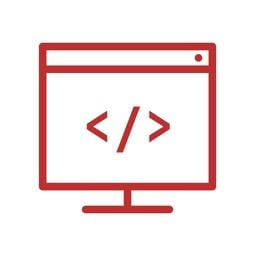Building Exceptional Web Portals: A Comprehensive Guide to Creating Effective Online Hubs
Building Exceptional Web Portals: A Comprehensive Guide to Creating Effective Online Hubs
Web portals are essential digital platforms that serve as central hubs for accessing diverse online services, information, and communities. They offer a seamless user experience, consolidating various functionalities and resources into a single, cohesive space. Whether it's an e-commerce marketplace, a social media platform, or a corporate intranet, a well-designed web portal can significantly enhance user engagement and drive business success.
Key Components of a Web Portal:
- Homepage: The entry point for users, often featuring a visually appealing layout and easy navigation.
- Content Management System (CMS): A tool for creating, editing, and managing content on the portal.
- User Profiles: Personalized accounts for users to store preferences, track activities, and interact with others.
- Search Functionality: A powerful tool for users to find specific content within the portal.
- Integration with External Services: The ability to connect with other online platforms, such as social media or payment gateways.
- Analytics and Reporting: Tools to track user behavior, measure performance, and make data-driven decisions.
Web Portal Development Lifecycle:
-
Planning and Requirements Gathering:
- Define the portal's clear goals and objectives to align with your business strategy.
- Identify the target audience to understand their needs and preferences.
- Conduct a comprehensive requirements analysis to determine the essential features and functionalities.
-
Design and Wireframing:
- Create user-centered designs that prioritize a seamless user experience.
- Develop detailed wireframes to visualize the layout and structure of the portal.
- Incorporate visual design elements that reflect your brand identity and resonate with the target audience.
-
Development:
- Select the appropriate technologies and tools based on the project's requirements and team expertise.
- Build a robust and scalable backend infrastructure to handle the portal's workload.
- Develop a user-friendly and responsive frontend that adapts to different devices and screen sizes.
-
Testing and Quality Assurance:
- Conduct thorough testing to identify and fix bugs and errors.
- Ensure the portal's performance, security, and accessibility meet industry standards.
- Gather feedback from users to refine the experience and address any issues.
Essential Technologies for Web Portal Development:
- Programming Languages:
- Frontend: HTML, CSS, JavaScript
- Backend: Python, PHP, Ruby, Java, C#
- Frameworks:
- Frontend: React, Angular, Vue.js, Svelte
- Backend: Django, Laravel, Ruby on Rails, Spring Boot, ASP.NET
- Databases: MySQL, PostgreSQL, MongoDB, Oracle, SQL Server
- Content Management Systems: WordPress, Drupal, Joomla, Umbraco, Kentico
- Cloud Platforms: Amazon Web Services (AWS), Google Cloud Platform (GCP), Microsoft Azure, Heroku, DigitalOcean
- Other Tools and Technologies:
- Version control systems (Git, SVN)
- Build tools (Webpack, Grunt, Gulp)
- Testing frameworks (Jest, Mocha, Selenium)
- API management tools (Postman, Swagger)
- Security tools (OWASP ZAP, Burp Suite)
Benefits of Web Portal Development:
- Enhanced User Experience: Provide a streamlined and intuitive platform for users to access information and services.
- Increased Customer Engagement: Foster community and interaction among users, leading to stronger relationships.
- Improved Business Efficiency: Streamline internal processes and communication, boosting productivity.
- Boosted Brand Visibility: Establish a strong online presence and reach a wider audience, increasing brand awareness.
- Enhanced Customer Loyalty: Build trust and loyalty among customers through personalized experiences and exceptional service.
In conclusion, successful web portal development requires a strategic approach that encompasses careful planning, effective design, robust development, and ongoing maintenance. By following these guidelines and leveraging the right technologies, businesses can create exceptional online hubs that drive engagement, enhance customer satisfaction, and contribute to overall business success.
Web portal development offers businesses a powerful platform to connect with their audience, enhance their online presence, and drive growth. By carefully planning, designing, and developing a well-structured portal, organizations can create a valuable digital asset that benefits both users and the business itself. From improving customer satisfaction and streamlining internal processes to boosting brand visibility and fostering community engagement, the potential benefits of web portal development are significant. By investing in a well-designed and executed portal, businesses can position themselves for long-term success in the digital age.
Easyupload - Crafting Your Online Presence A Comprehensive Guide to Website Design and Development Services
Docs Google - Crafting Your Online Presence A Comprehensive Guide to Website Design and Development Services
Btafile - Crafting Your Online Presence A Comprehensive Guide to Website Design and Development Services
Dz4up - Crafting Your Online Presence A Comprehensive Guide to Website Design and Development Services
Mediafire - Crafting Your Online Presence A Comprehensive Guide to Website Design and Development Services
Filefactory - Crafting Your Online Presence A Comprehensive Guide to Website Design and Development Services
Dosya - Crafting Your Online Presence A Comprehensive Guide to Website Design and Development Services
4shared - Crafting Your Online Presence A Comprehensive Guide to Website Design and Development Services
K2s - Crafting Your Online Presence A Comprehensive Guide to Website Design and Development Services
Depositfiles - Crafting Your Online Presence A Comprehensive Guide to Website Design and Development Services
Uploadnow - Crafting Your Online Presence A Comprehensive Guide to Website Design and Development Services




Comments
Post a Comment